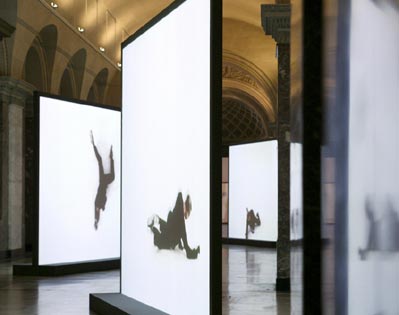If you’re new here, you may want to subscribe to my RSS feed to receive the latest Architectradure’s articles in your reader or via email. Thanks for visiting!
For the context of the class, Helen Mirra invited the sculptor Peter Welz. He also reviewed my work on inside/outside and shared with me his approach from studying the figure to lastly using the figure as a tool. I am fascinated by his process. During his trajectory, he sculpted and casted the figure to later get rid of its cast to only project the figures onto structural spaces.
Today, Peter Welz gave a talk at the Harvard Film Archive, Carpenter Center. He presented a selection of work expressing the relationship between the space and being.
In the following work, a line is projected on a concrete wall. By blowing onto the camera, the line vanishes and disappear to present a plain concrete wall; as the artist stops blowing, the line reappears.

line | vanishing | disappearing | breath | aspirate |
onto fake concrete wall | concave, Berlin 2004
video projection onto a fake concrete wall, 550 x 280 cm, 30 min Loop on DVD
In this work, Peter Weltz translates a unfinished portrait from Francis Bacon into figure movements.

retranslation | final unfinished portrait (francis bacon) | figure inscribing figure | [take 02] Installation view Musée du Louvre
Photo: © Musée du Louvre / Angèle Dequier © Peter Welz / DACS & the Estate of Francis Bacon

study | w.forsythe re-translating the unfinished portrait by francis bacon
colour print on acitate/paper, permanent marker, gaffa tape 61cm x 86 cm, 2005 (© Estate of Francis Bacon | Dublin City Gallery The Hugh Lane)





